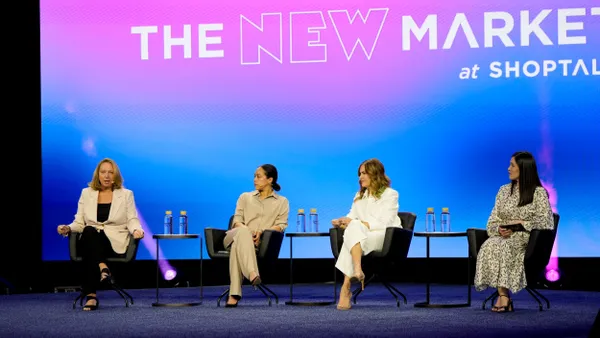Innovative, customer-focused retailers are always searching for ways to better serve shoppers and increase sales. They know that it’s not just about what they sell but largely how they make it available and affordable to their customers. While many retailers are heads down in delivering superior customer experience to improve the overall shopping journey, they have been missing the mark on a key part of this journey: how consumer’s pay.
Retail credit is nothing new to retailers. For years and years, it has been used a marketing tool to drive loyalty and increase repeat sales. However, the traditional model of retail credit at checkout and how customers pay has not been optimized for today’s modern day customers.
The good news is that a new retail credit movement has been brewing for the past 12-18 months, driven by the migration of shoppers to online and mobile and the increase in buying power from the younger Gen Y and Gen Z shoppers, that need flexible lending options. Forrester was one of the first to formalize this trend in an April 2017 report urging digital leaders to “seize the surge in demand for retail credit” and highlighting terms like “disruptive”, “evolving”, “putting a new spin”, and “playing by new rules”.
With customer obsession as the true north, this new approach to retail credit re-thinks financing as a critical part of the customer experience. This means optimizing the “last mile” of the payment process to provide broad, easy access to credit with a wide range of financing options (retail cards; installment plans, lease-to-own and more).
The retail credit movement came into clear focus in the last holiday season as online and mobile sales surged to new levels. Retailers, like Build.com, who had optimized their financing programs saw major rewards from their efforts. As retailers look to capitalize on the rising usage of online credit, these winning strategies provide a quick playbook for driving a better experience, deeper loyalty -- and more sales.
Remove a significant purchase hurdle
Denial of a credit application has a dampening effect on spending. Seven out of 10 customers settle for a smaller purchase -- or, worse, walk away from transactions altogether -- when their request for credit is rejected. And 53% of consumers say they’re unlikely to apply for credit in the first place if they have to fill out multiple applications on the quest to find the right lender.
To save these sales, merchants should broaden the array of credit options they offer, as ICON Health & Fitness did prior to the holidays in 2017. With average ticket sizes hovering around $1,500, opening up access to online credit was key. The new program successfully converted more shoppers into buyers, with a 122% year-over-year increase in credit sales on Black Friday, and a 70% increase in ticket size.
Boost order values
Access to an expanded array of credit options gives shoppers payment flexibility, enabling them to buy more products relevant to their needs in a single transaction.
For example, after online housewares site Build.com introduced a variety of branded credit options, applicant approval rates reached 88% -- causing average order values to triple compared with customers using a non-store credit card.
Similarly, when photo and video retailer Adorama launched special financing for electronics purchases, the average purchase amount jumped from $500 to $1,325 -- a 165% increase. And the streamlined application process was a hit with mobile users, 31% of whom accessed financing.
Fostering brand loyalty
Not only does expanded access to credit drive sales and higher ticket prices; consumer financing can also drive loyalty. Vyze found that some 84% of shoppers who access store credit use it more than once, and merchants offering expanded credit options see repeat purchase rates rise more than 20%.
By broadening its array of lenders while streamlining the credit application process, appliance retailer BrandsMart is now able to offer 90% of its shoppers financing, boosting customer satisfaction and growing repeat business by 73%.
With results like these, there is no doubt that retail credit movement is here – and gathering momentum. Retailers would do well to consider financing as a top priority for customer experience investments, or risk losing marketshare to peers who understand the new role of credit for today’s shopper.
To see how other leading retailers beat their holiday sales and are boosting customer loyalty, check out our latest case study.










